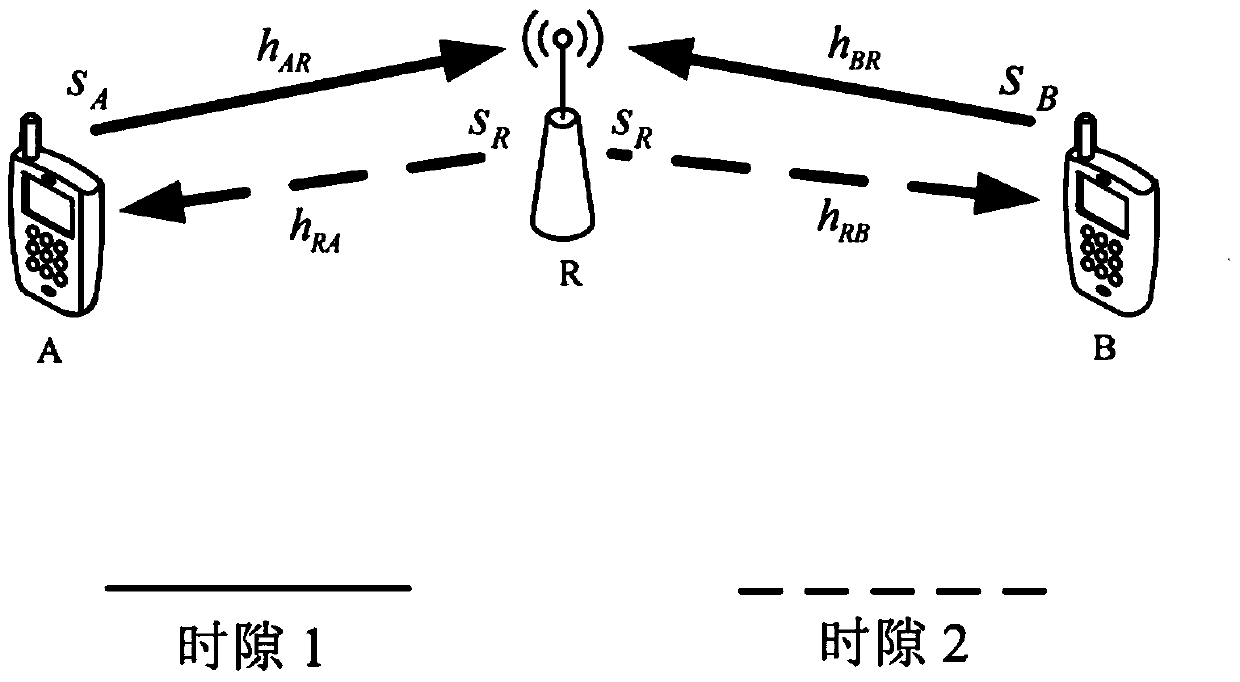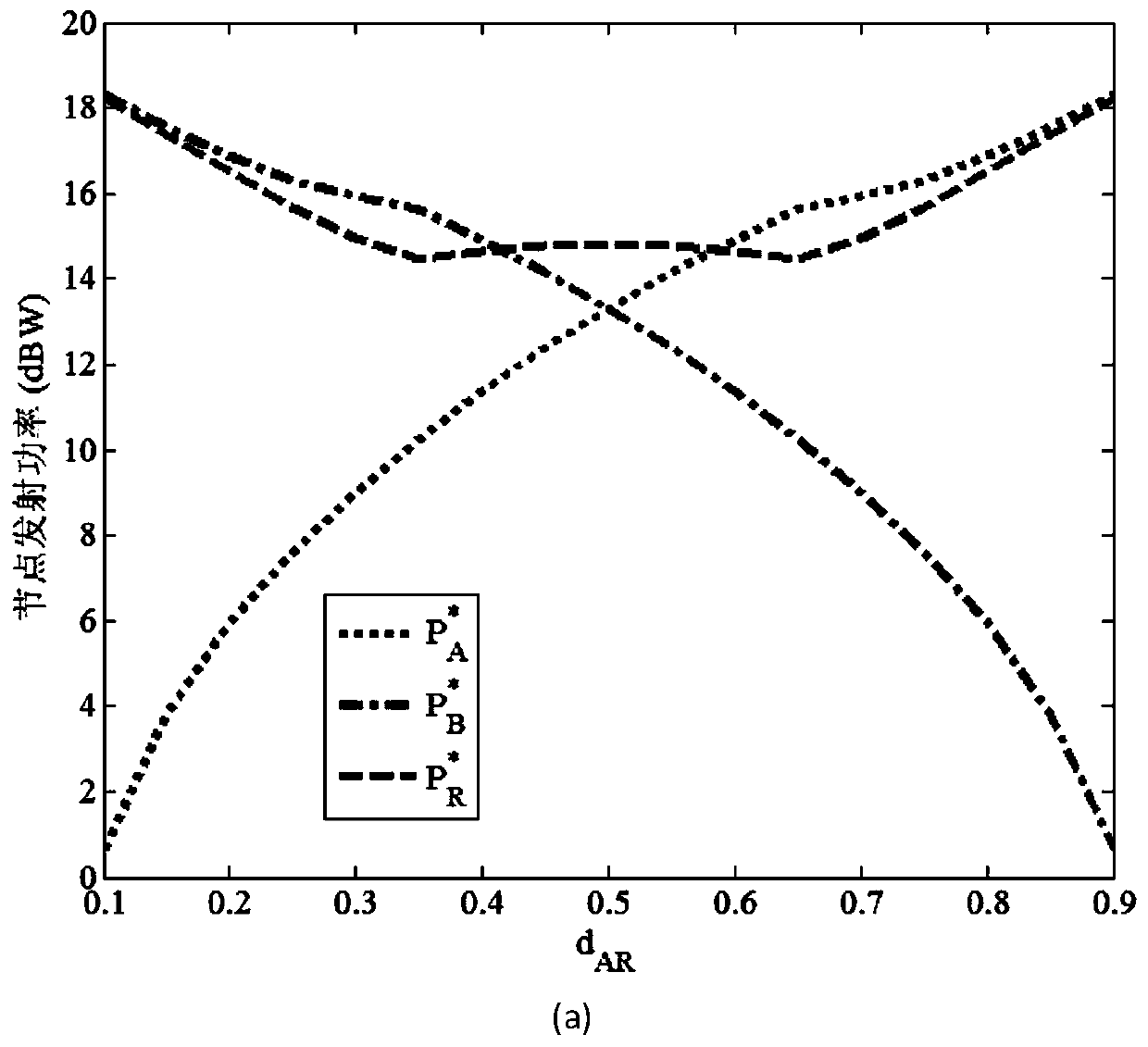Bidirectional relay system power distribution method based on AF (Amplify-and-Forward) mechanism
A two-way relay and allocation method technology, applied in power management, diversity/multi-antenna systems, location diversity, etc., can solve problems such as link state changes, spectrum resource occupation, and energy resource consumption
- Summary
- Abstract
- Description
- Claims
- Application Information
AI Technical Summary
Problems solved by technology
Method used
Image
Examples
Embodiment Construction
[0075] like figure 1 As shown, the source node N A and N B To complete an information exchange, two consecutive time slots of equal length need to be occupied. first time slot, N A and N B Before transmitting the respective information, it is necessary to first check that k=λ 2 / λ 1 value, and then check whether the inequality (1), (3), (5), (6) or (7) is true, and if it is true, calculate the respective transmit power, and then send their respective information to the relay node N at the same time R . In order to complete the above operations, N A and N B need to know z, λ 1 ,λ 2 , Q S and the value of P. where z=2 2r -1; P is the maximum peak transmit power of the transmitter; Q S is the acceptable outage probability of the system, which is a system parameter. Therefore, N A and N B Ability to know the parameters z, Q in advance S and the value of P. lambda 1 and lambda 2 Is the statistical value of the channel, which can be regarded as an exponential r...
PUM
 Login to View More
Login to View More Abstract
Description
Claims
Application Information
 Login to View More
Login to View More - R&D
- Intellectual Property
- Life Sciences
- Materials
- Tech Scout
- Unparalleled Data Quality
- Higher Quality Content
- 60% Fewer Hallucinations
Browse by: Latest US Patents, China's latest patents, Technical Efficacy Thesaurus, Application Domain, Technology Topic, Popular Technical Reports.
© 2025 PatSnap. All rights reserved.Legal|Privacy policy|Modern Slavery Act Transparency Statement|Sitemap|About US| Contact US: help@patsnap.com



